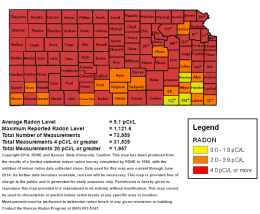The Fly Season Battle Has Begun!
By Pat Burt – Wild West District Agriculture & Natural Resources Agent
We all look forward to warmer weather but along with that warmer weather comes flies and they can be especially problematic for livestock owners. They are not only a nuisance but they can affect your animal’s health and performance. The best results occur when we start trying to control flies before they get out of hand. Think of it as simple multiplication. If you can keep their numbers down early, you should be able to reduce the number of flies born over the warm month periods.

The flies that cause the most problems for livestock in our area are house, stable, face, and horn flies. House flies feed on blood, sweat, tears, saliva and other bodily fluids of an animal. Stable flies feed on blood and breed in things like rotting hay or feed and are found around bunk feeders, water tanks, and compost. Face flies feed on mucous and get around the eye and mouth areas and can be transmitters of pink eye. Face flies only spend about 10% of their time on animals and the rest of the time they are on fences, vegetation and other surfaces. Horn flies feed on blood and stay on the animal’s body (shoulders, backs, and sides) for most of the time and can feed 20-30 times a day!
The first thing you need to do to plan your fly program is to identify which flies you need to control. If you do not know what type of flies you have, here is a link that can help you identify them: https://extension.sdstate.edu/fly-control-considerations-cattle-pasture . This will give you a better idea on how to get started.
There are many products and things that we can do to try to reduce their numbers. Some of the methods/products include: attract and catch, insecticide sprays, pour-ons, back rubbers (oilers), dusts, ear tags, repellents, insecticides in livestock feed, “good housekeeping”, and parasitic wasps.
An Integrated Pest Management (IPM) approach of utilizing a combination of chemical and non-chemical approaches may give you the best results. If using chemical controls, you should try to rotate your insecticide class to keep flies from becoming resistant to an insecticide group. Your IPM needs to be a continuous process during fly season as flies can get out of hand rapidly if we do not keep up our fly control efforts. Always make sure that any chemicals you are using are appropriate to be used on the animal you will be using it on or around and also that it is appropriate for the age of the animals. Make sure to always read label directions and use only as directed. Here is a site that can help you choose appropriate chemicals for your type of animal and type of fly you are targeting by entering the specific information for your situation: https://www.veterinaryentomology.org/vetpestx .
Good housekeeping cannot be stressed enough in the control of flies. Keeping manure away from livestock and keeping pens cleaned up to avoid rotting feed and keeping weeds mowed can help reduce areas where flies thrive. This video from K-State Research and Extension will give you some more information about both chemical and non-chemical controls:
https://www.youtube.com/watch?v=CruB4fINMKY&t=481s
Some additional non-chemical approaches that can be used are parasitic wasps and walk through horn fly traps. If you use the parasitic wasps, you need to keep in mind that if you use a premise spray to kill flies that the parasitic wasps will also be killed. Just a side note, parasitic wasps do not bother humans or animals so they will not become a nuisance, except to your flies. An approach for catching horn flies on cattle in pastures was invented over a century ago and you can find information and the blueprint to make your own from this link to the University of Missouri Extension: https://extension.missouri.edu/publications/g1195 .
Approaches may need to be adjusted as you figure out what is and is not working for you and do not be afraid to ask your veterinarian for advice. Good luck this summer on your fly control and I hope that you win the yearly battle!












